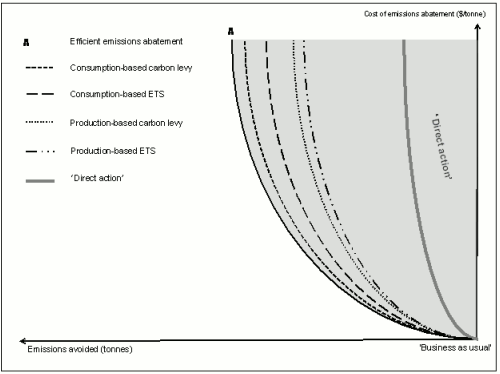But the central issue is the policy process. Why isn’t an independent, qualified body, like the Productivity Commission, being asked to compile a cost-effectiveness ranking of options ‘putting a price on carbon’?
Politicians have shirked this basic task. The Government and the Coalition rejected a Senate Inquiry recommendation that various alternative options be tested in 2009. The Greens seemingly prefer that any and all mitigation policies be imposed, regardless of their cost-effectiveness.
Will the Government now commission a genuinely independent, qualified body, like the Productivity Commission, to review all options and produce a cost-effectiveness ranking of them?
Advertisement
The Shadow Minister for Communications called for a Productivity Commission review of the cost-effectiveness of the NBN project. Will the Opposition now call for a similar Productivity Commission cost-effectiveness review of greenhouse gas abatement policies, including ‘direct action’?
There are various private sector attempts to assess the cost-effectiveness of alternative options for pricing emissions, and many assertions by the Government about them as well.
Based on these, is it possible to provide a an illustrative ranking of options, as shown in Figure 1.
For a given technology bundle, there will be a maximum-efficiency national emissions abatement ‘frontier’ that will look something like the curved line ‘A’ in Figure 1. It is curved to show that reducing emissions becomes increasingly costly per tonne as the emissions task increases.

Figure 1.
Advertisement
Private sector analyses suggest that policies targeting national consumption of emissions (ie, excluding exports and including imports) are likely to be the most cost-effective, not least because they eliminate ‘carbon leakage’ due to industries shifting offshore. They require none of the ‘special deals’ likely under a national emissions production approach. A carbon tax or an emissions trading scheme could be used.
Policies targeting national production of emissions (ie, including exports and excluding imports) are likely to be less cost-effective, not least because they induce ‘carbon leakage’ due to industries shifting offshore. This also applies to a carbon tax or an emissions trading scheme.
One analysis suggests a national emissions consumption approach could cost up to 77% less in output losses per tonne of greenhouse gas emissions reduction than a national emissions production approach.
Discuss in our Forums
See what other readers are saying about this article!
Click here to read & post comments.
14 posts so far.